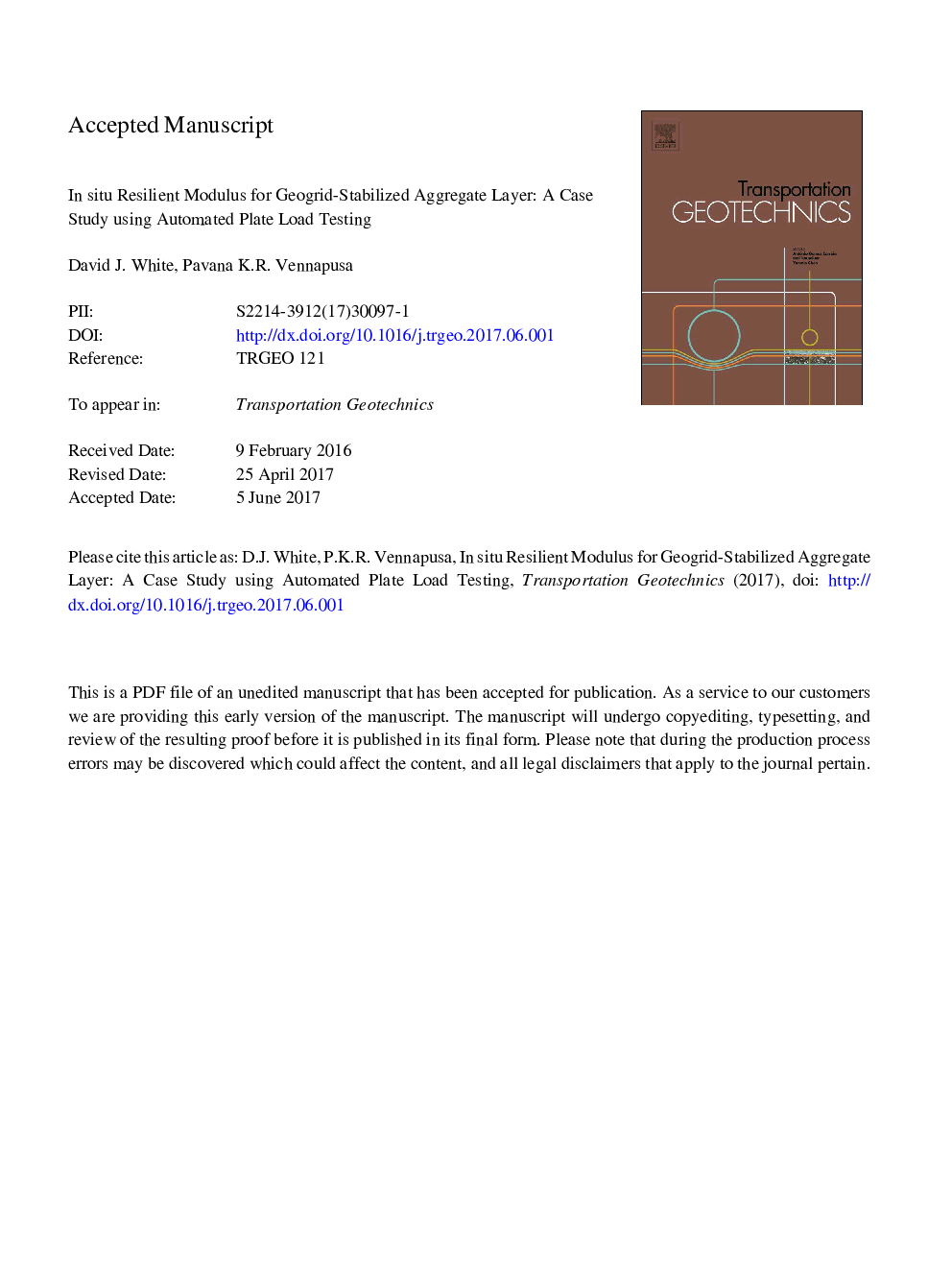| Article ID | Journal | Published Year | Pages | File Type |
|---|---|---|---|---|
| 4928787 | Transportation Geotechnics | 2017 | 33 Pages |
Abstract
To characterize the in situ performance of geogrid-stabilized aggregate base, results of cyclic and static automated plate load tests (APLTs) are presented. In situ testing involved performing 1000 cycle APLTs to determine in situ resilient modulus (Mr) using a 304.8Â mm (12Â in.) diameter loading plate. One extended 10,000 cycle test was also performed to study changes in the Mr and permanent deformation with loading cycles. Static plate load tests determined the stain/deformation modulus (Ev) and modulus of subgrade reaction (ku) for comparison to the cyclic test results. Using a deflection basis sensor kit and layered elastic analysis, the subgrade and geogrid-stabilized aggregate base resilient moduli values were calculated. The equations and test methods are described for the various APLTs performed. Results show that the in situ Mr values for the geogrid-stabilized aggregate layer are on average about 10 times higher than the subgrade layer, that the composite layer Ev2/Ev1 ratio was low indicating good stiffness and compaction, and the modulus of subgrade reaction was relatively high at 106Â kPa/mm (392 psi/in.). A cyclic confining stress-dependent Mr test was also performed to determine the relationship between cyclic and confining stresses and Mr. Permanent deformation power modeling was used to estimate when the in situ cyclic loading response reached a near-linear elastic behavior. Test results presented herein demonstrate an original approach to the mechanistic characterization of pavement foundation systems which is of interest to engineers using mechanistic-empirical pavement design methods.
Related Topics
Physical Sciences and Engineering
Earth and Planetary Sciences
Geotechnical Engineering and Engineering Geology
Authors
David J. White, Pavana K.R. Vennapusa,
